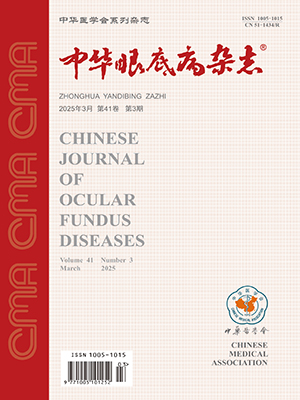Objective To investigate the effects of heparanase and vascular endothelial growth factor (VEGF) and their correlation in CoCl2 induced human retinal microvascular endothelial cells (HRECs) in an hypoxia model. Methods Human eyes were selected to establish CoCl2induced HRECs hypoxia model in this study. Four experimental groups were studied: normal control group, hypoxia group (CoCl2 100 μmol/L, 48 hours),PI-88 group (specific competitive inhibitor of heparanase: phosphomannopentaose sulfate, PI-88,5 μg/ml, combined with CoCl2 100 μmol/L, 48 hours) and PBS control group. Heparanase, VEGF and Pol Ⅱ expression in HRECs of normal and hypoxia group were analyzed with immunofluorescence. Western blot was used to evaluate the expression of heparanase and VEGF in HRECs of normal, hypoxia, PI88 and PBS control groups. ResultsImmunofluorescence studies showed that the expression of heparanase and VEGF in cytoplasm was intense in hypoxia HRECs, but faint in normal group. Heparanase was also observed in the nucleus of hypoxia HRECs. Western blot results showed that the expression of Hpa and VEGF protein was increased significantly in hypoxia group compared with normal group (Hpa:F=-4。005, P<0.05;VEGF:F=-4.063, P<0.05), and VEGF was decreased in HRECs treated with PI-88(F=5。963, P<0.05). ConclusionsHeparanase is upregulated that resulted in increase of VEGF expression, therefore enhanced angiogenesis in CoCl2 induced hypoxia HRECs.
Citation: 宋新,胡洁,袁玲,李士清,马红婕,林少芬,唐仕波. Correlation between heparanase and vascular endothelial growth factor in human retinal microvascular endothelial cells induced by hypoxia. Chinese Journal of Ocular Fundus Diseases, 2012, 28(1): 57-61. doi: Copy
Copyright © the editorial department of Chinese Journal of Ocular Fundus Diseases of West China Medical Publisher. All rights reserved




